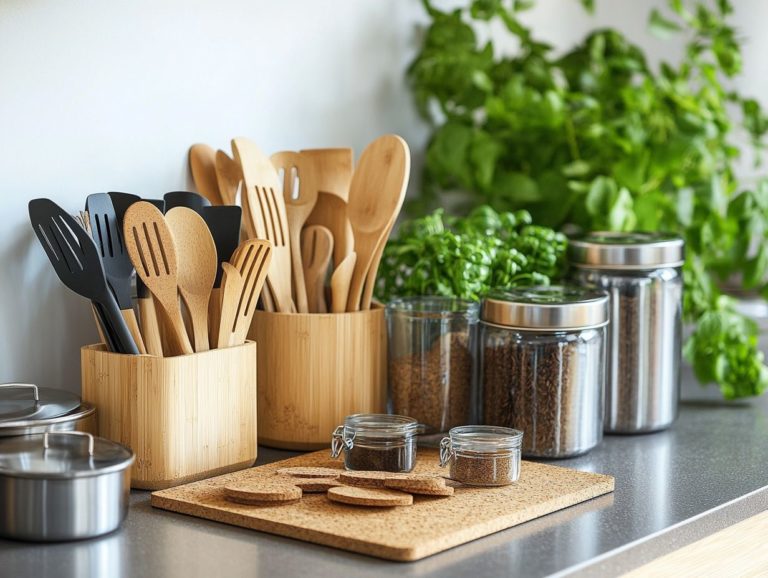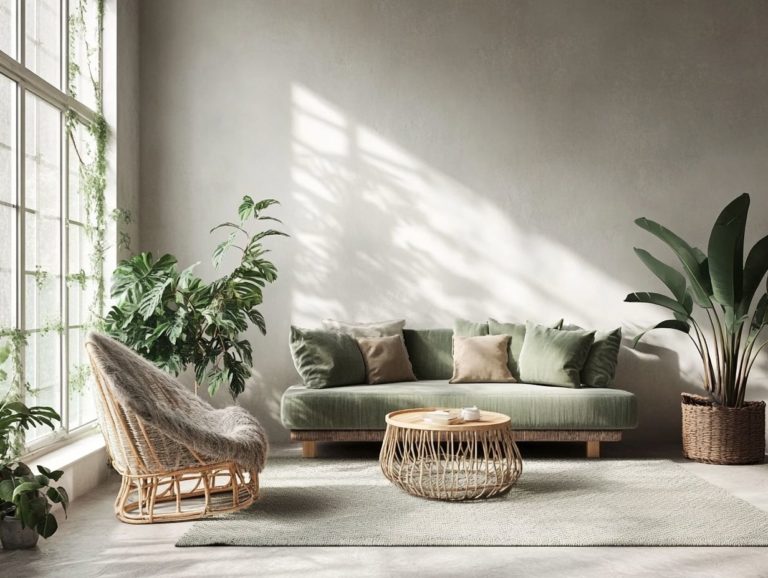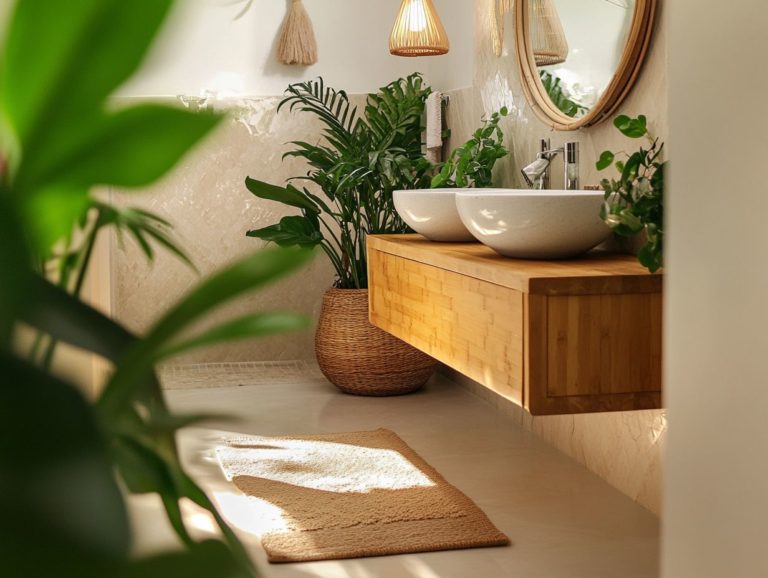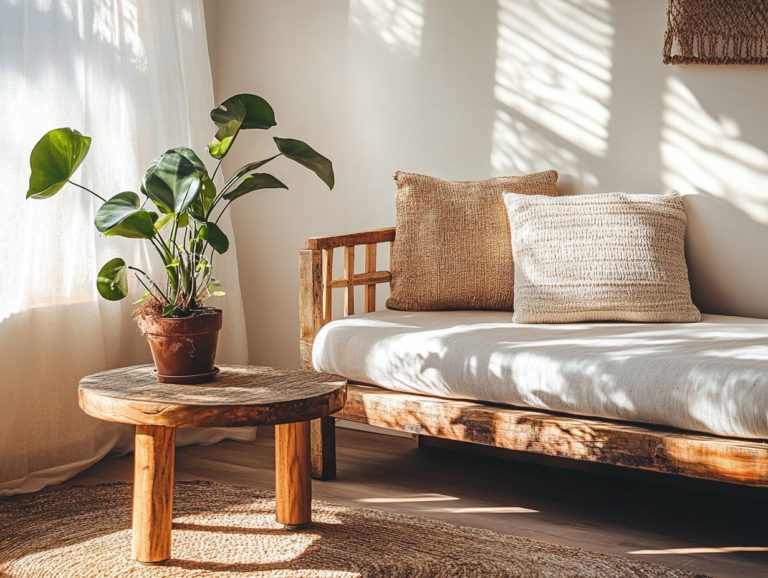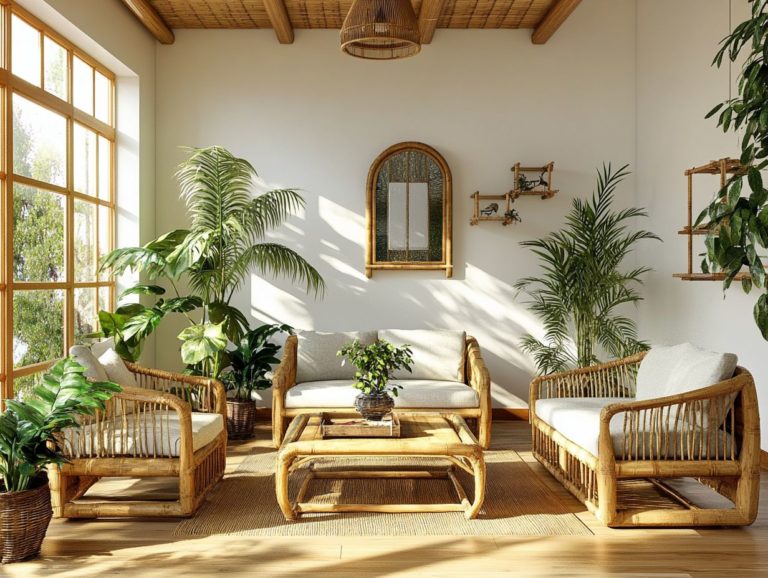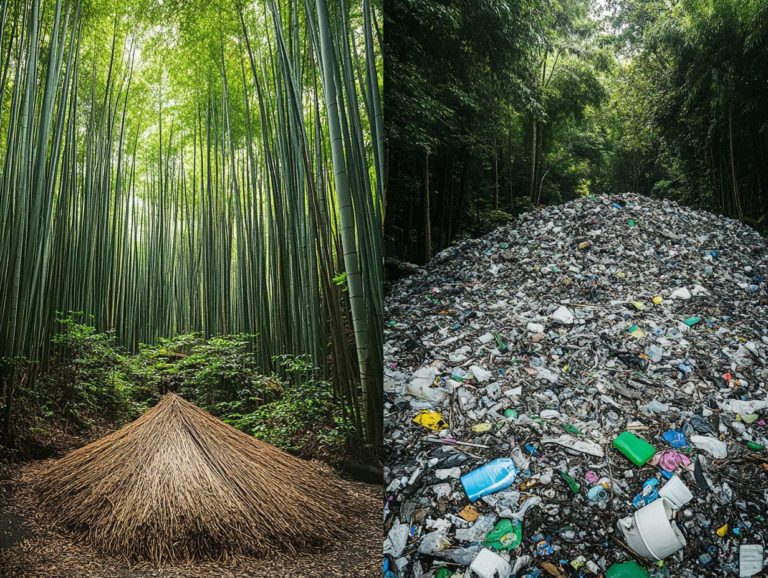5 Sustainable Materials that Are Worth the Investment
In a world grappling with environmental challenges, your choice of materials can significantly influence the path toward a sustainable future.
This article showcases five remarkable sustainable materials: bamboo, hemp, recycled plastic, cork, and organic cotton.
These materials not only boast eco-friendly properties but also bring substantial economic and social benefits.
Find out how businesses and individuals can easily use these materials in daily life, dispel common misconceptions, and unveil the positive impact of making thoughtful material choices.
Contents
- Key Takeaways:
- 1. Bamboo
- 2. Hemp
- 3. Recycled Plastic
- 4. Cork
- 5. Organic Cotton
- Why Is Investing in Sustainable Materials Important?
- What Are the Environmental Benefits of Using Sustainable Materials?
- What Are the Economic Benefits of Using Sustainable Materials?
- What Are the Social Benefits of Using Sustainable Materials?
- How Can Businesses and Individuals Incorporate Sustainable Materials into Their Daily Lives?
- What Are Some Common Misconceptions About Sustainable Materials?
- Frequently Asked Questions
Key Takeaways:
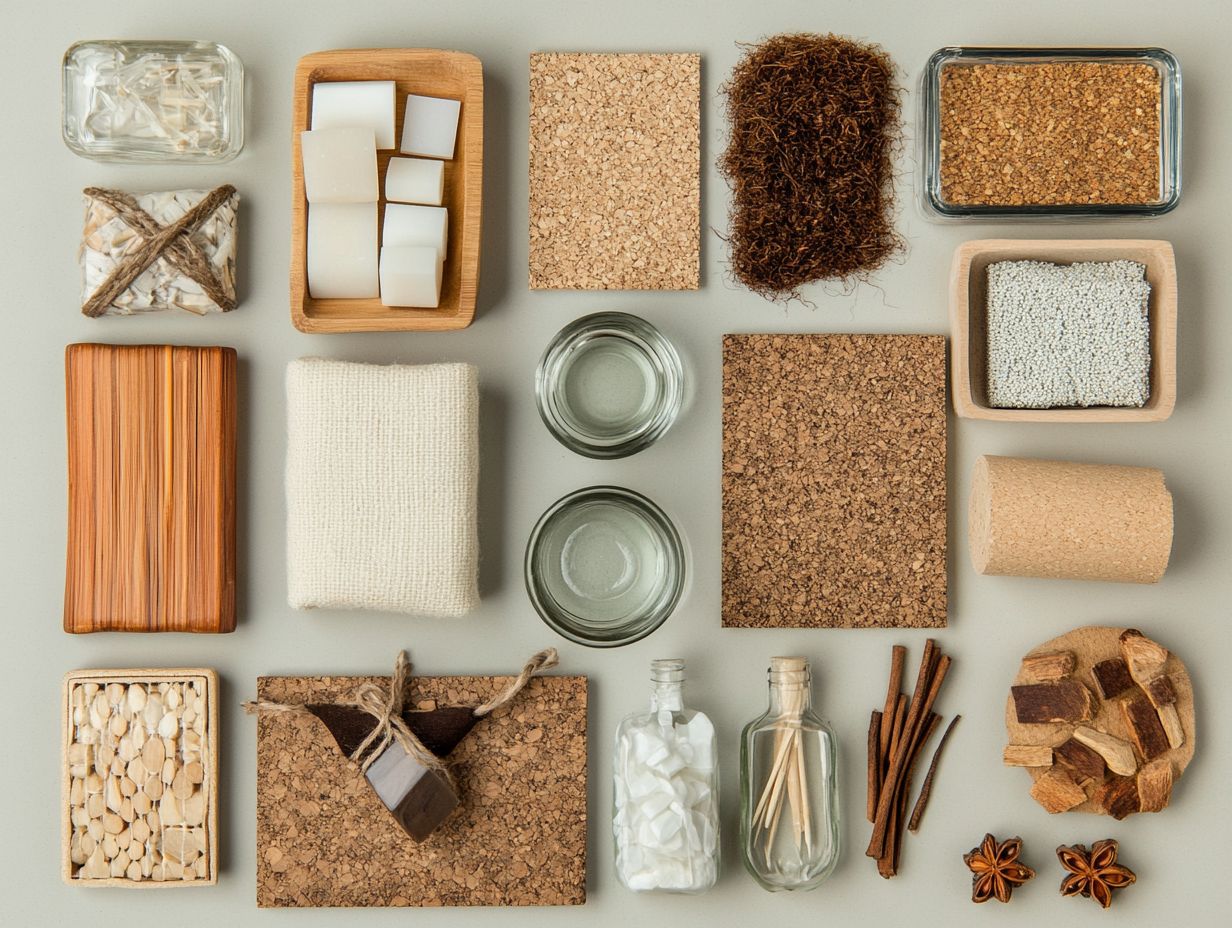
- Investing in sustainable materials benefits the environment, economy, and society.
- Materials like bamboo and hemp provide significant environmental advantages.
- Businesses and individuals can easily incorporate these materials, leading to positive impacts.
1. Bamboo
Bamboo is swiftly emerging as a top-tier eco-friendly construction material. It is admired not just for its visual charm but also for its exceptional sustainability. This makes it an outstanding option for anyone looking to build a green home, especially given the current housing crisis and pressing climate change issues.
This remarkable natural resource features a strength-to-weight ratio, meaning bamboo is strong compared to its weight, making it a great alternative to heavier materials like steel and concrete. It positions itself as a formidable alternative for contemporary architecture.
With a growth rate that can reach up to three feet per day, bamboo can be harvested in just three to five years, a remarkable contrast to the decades it takes for hardwood trees to mature.
Its versatility is equally striking. Bamboo can be used in a wide array of applications, from structural beams to flooring and furniture. By opting for bamboo, builders can dramatically reduce construction waste and lower carbon emissions, thus contributing to a more sustainable industry.
2. Hemp
Hemp is an extraordinary eco-friendly material that provides impressive insulation properties and plays an important part of eco-friendly design. It stands as a valuable asset in your pursuit of energy efficiency and waste reduction in construction.
This remarkable plant brings a wealth of benefits that can significantly elevate your modern building practices. Its low environmental impact is due to its rapid growth cycle and minimal water requirements, which help alleviate resource strain.
The durability of hemp materials ensures longevity and resilience against wear, making them ideal for a diverse range of architectural applications.
By integrating hemp into your construction projects, you actively contribute to lowering carbon emissions, aligning seamlessly with the principles of eco-friendly architecture. This adaptability gives you the power to explore innovative ways to incorporate hemp while maintaining aesthetic appeal.
3. Recycled Plastic
Recycled plastic has emerged as a revolutionary eco-friendly building material. It effectively tackles waste reduction while minimizing the environmental impact associated with traditional construction methods.
This innovative material has found its way into various applications, ranging from durable floor tiles and insulation panels to structural components and outdoor furnishings.
Its inherent versatility gives you the power to explore imaginative designs while enhancing energy efficiency through improved thermal insulation, ultimately helping to lower heating and cooling costs.
Projects like the incorporation of recycled plastic in the construction of bridges and park benches demonstrate not only the sustainability of these materials but also their impressive ability to endure harsh weather conditions.
By choosing to incorporate recycled plastic, you significantly contribute to lower carbon emissions, paving the way toward a greener future.
4. Cork
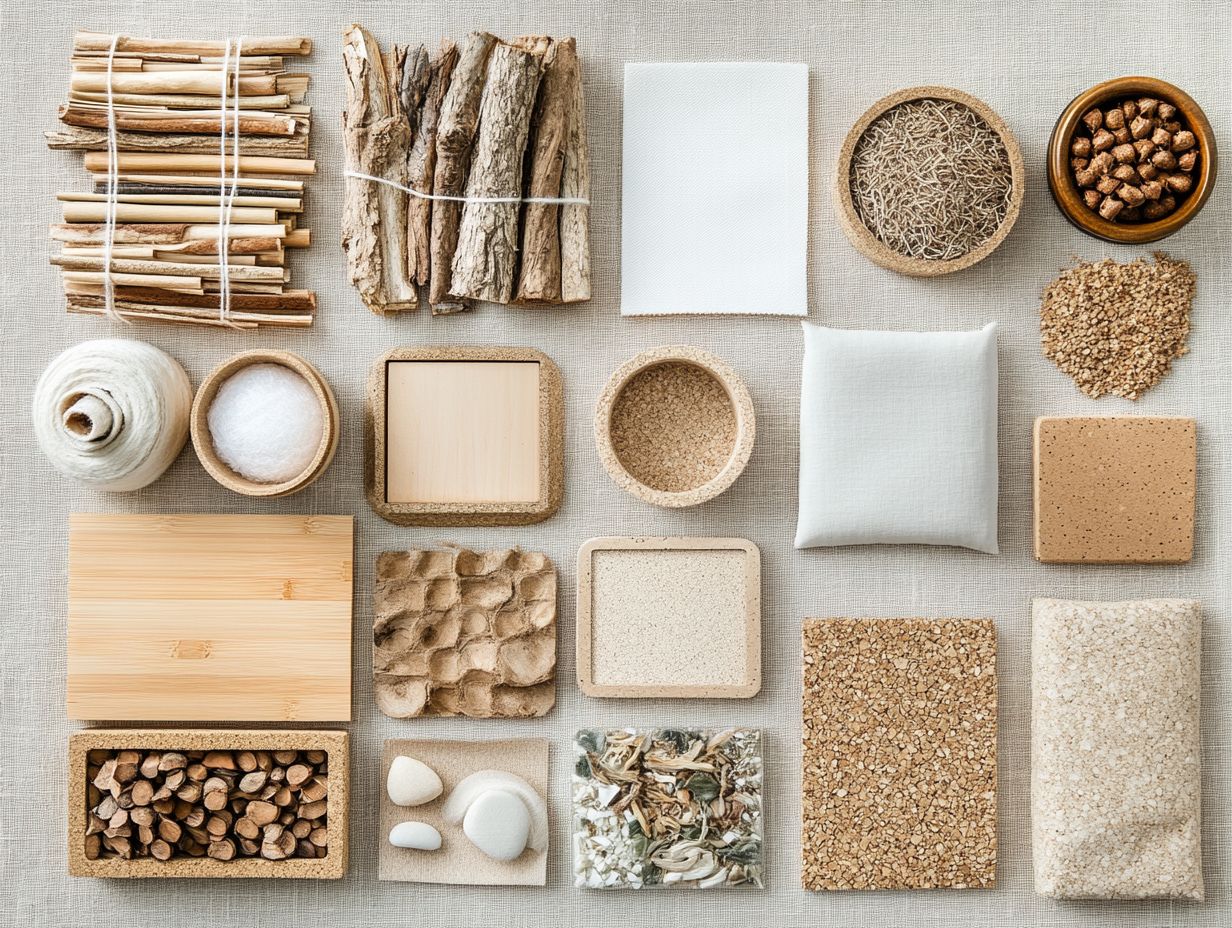
Cork is an extraordinary sustainable material. It is celebrated for its natural insulation properties and plays a crucial role in eco-friendly architecture.
This unique resource is renewable and harvested from the bark of cork oak trees without causing harm, ensuring a sustainable process. Its remarkable insulation capabilities help maintain comfortable indoor temperatures and reduce reliance on heating and cooling systems, leading to lower energy bills.
The aesthetic appeal of cork, with its distinctive textures and rich colors, makes it a favored choice in interior design. It adds warmth and sophistication to your spaces. As a carbon-negative material, cork significantly reduces carbon emissions, making it an invaluable asset in sustainable design.
5. Organic Cotton
Organic cotton signifies a meaningful shift toward biodegradable materials. It champions eco-friendly practices and sustainable resources in construction and design.
This transition preserves biodiversity and curbs water pollution, fostering healthier agricultural methods. By eliminating harmful pesticides and fertilizers, organic cotton creates a safer environment for farmers and consumers.
Its versatility allows for an array of applications, from clothing and bedding to eco-friendly home furnishings. As a natural fiber, organic cotton plays a crucial role in addressing climate change by locking away carbon in the soil and promoting sustainable land management practices.
Choosing organic cotton is a powerful fashion statement. It signifies a pledge to a healthier, more sustainable future.
Why Is Investing in Sustainable Materials Important?
Investing in sustainable materials is crucial right now, as how sustainable materials can save you money can play a significant role in combating the housing crisis and climate change.
By prioritizing options like bamboo, recycled steel, and mycelium, you’re not just choosing a healthier planet; you’re also embracing sustainable materials that are also stylish, reaping long-term economic benefits.
These materials lead to lower maintenance costs and energy bills, enhancing financial resilience for builders and homeowners. They also support social equity by creating job opportunities in local economies.
As future generations inherit these sustainable practices, they will enjoy a cleaner environment and an enhanced quality of life.
What Are the Environmental Benefits of Using Sustainable Materials?
The environmental benefits of using sustainable materials are remarkable. They lead to significant waste reduction, lower carbon emissions, and a responsible approach to construction. If you’re considering a project, knowing what to look for in sustainable home materials can greatly enhance your decisions.
These materials enhance air quality by minimizing harmful emissions during production. They also curb resource depletion due to their renewable nature. For example, hempcrete is crafted from hemp fibers and lime, locking away carbon dioxide and requiring fewer resources than traditional concrete.
There’s also cob, made from clay, sand, and straw, providing exceptional insulation and versatility.
By opting for such alternatives, you’re fostering enhanced biodiversity. These choices encourage local materials and lessen the need for extensive land clearing, ultimately supporting healthier ecosystems and vibrant wildlife habitats.
What Are the Economic Benefits of Using Sustainable Materials?
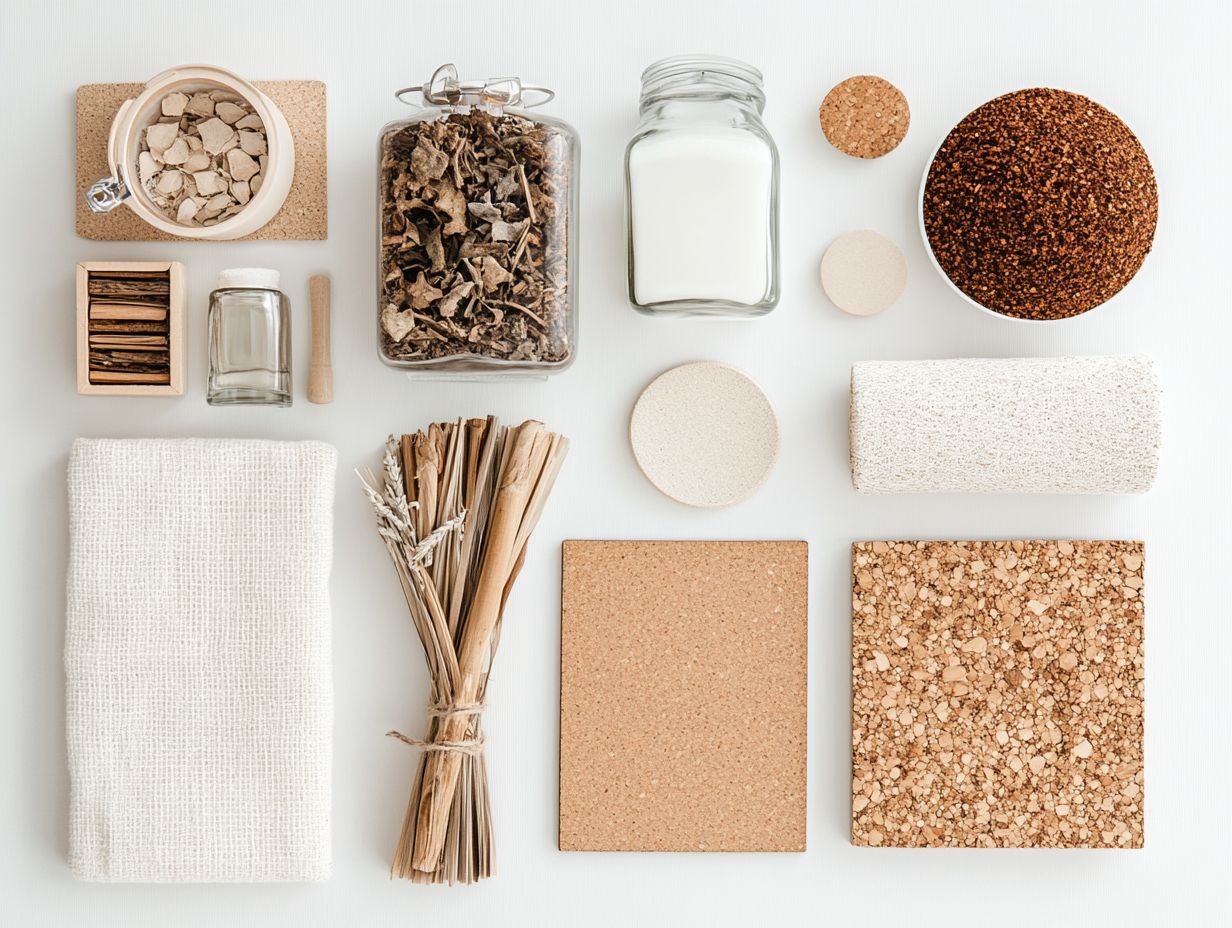
Using sustainable materials presents significant economic advantages that you can’t overlook. It promotes energy efficiency and leads to long-term cost savings on maintenance while enhancing property value through thoughtful sustainable design principles.
By adopting these materials, you can expect a dramatic reduction in operating costs, thanks to lower energy consumption and decreased waste disposal expenses. A study by the National Renewable Energy Laboratory found that buildings designed with sustainable materials consume up to 30% less energy than their traditional counterparts, and you might also explore unique uses for sustainable materials in decor.
Many regions offer tax incentives for using green products, enhancing the financial appeal of these choices. A prime example is the Bank of America Tower in New York, which capitalized on sustainable practices to slash its energy bills by a staggering 50%. This case illustrates how eco-friendly investments can yield impressive returns.
What Are the Social Benefits of Using Sustainable Materials?
The social benefits of using sustainable materials reach far beyond the construction site. They nurture community well-being, elevate quality of life, and champion eco-friendly architecture that resonates with public concerns about climate change.
By incorporating these materials, you contribute to healthier living environments by minimizing pollutants and waste. You also promote social equity, making sustainable design accessible to people from all economic backgrounds.
Picture neighborhoods filled with green spaces, energy-efficient buildings, and recycled materials. This creates vibrant neighborhoods where everyone feels connected as they engage in the stewardship of their local environment.
This shared commitment encourages collaboration and strengthens community ties, crafting welcoming spaces that are both environmentally responsible and culturally enriching, inviting everyone to partake in a more sustainable future.
How Can Businesses and Individuals Incorporate Sustainable Materials into Their Daily Lives?
You can seamlessly incorporate sustainable materials into your daily life by making conscious choices that prioritize eco-friendly options in construction and design. This approach fosters a culture of sustainability and empowers your decisions.
By sourcing local materials, you can reduce your carbon footprint the total amount of greenhouse gases produced by your activities while supporting your community and stimulating the local economy. Opting for recycled or biodegradable alternatives, which are materials that break down naturally without harming the environment, significantly lessens your environmental impact.
Educating others about the myriad benefits of sustainability helps create a more informed populace eager to embrace eco-friendly practices. Sharing your knowledge about the positive effects of these decisions is crucial for encouraging widespread adoption and fostering a more sustainable future for generations to come.
What Are Some Common Misconceptions About Sustainable Materials?
There are numerous misconceptions about sustainable materials, such as the belief that they are pricier or less durable than traditional options. These misconceptions can impede the widespread adoption of eco-friendly practices.
A closer look reveals that many successful projects around the globe have embraced these materials and showcased their viability. For example, eco-friendly buildings constructed with bamboo and recycled steel demonstrate impressive resilience and longevity, often outlasting their conventional counterparts. Discover 5 ways to integrate sustainable materials in decor that highlight this trend.
Research shows that initial costs are often offset by lower maintenance and energy savings over time, making sustainable materials a savvy investment. Highlighting these examples can help you understand the top 5 benefits of using sustainable materials and how integrating sustainability into construction does not compromise quality or strain your budget.
Frequently Asked Questions
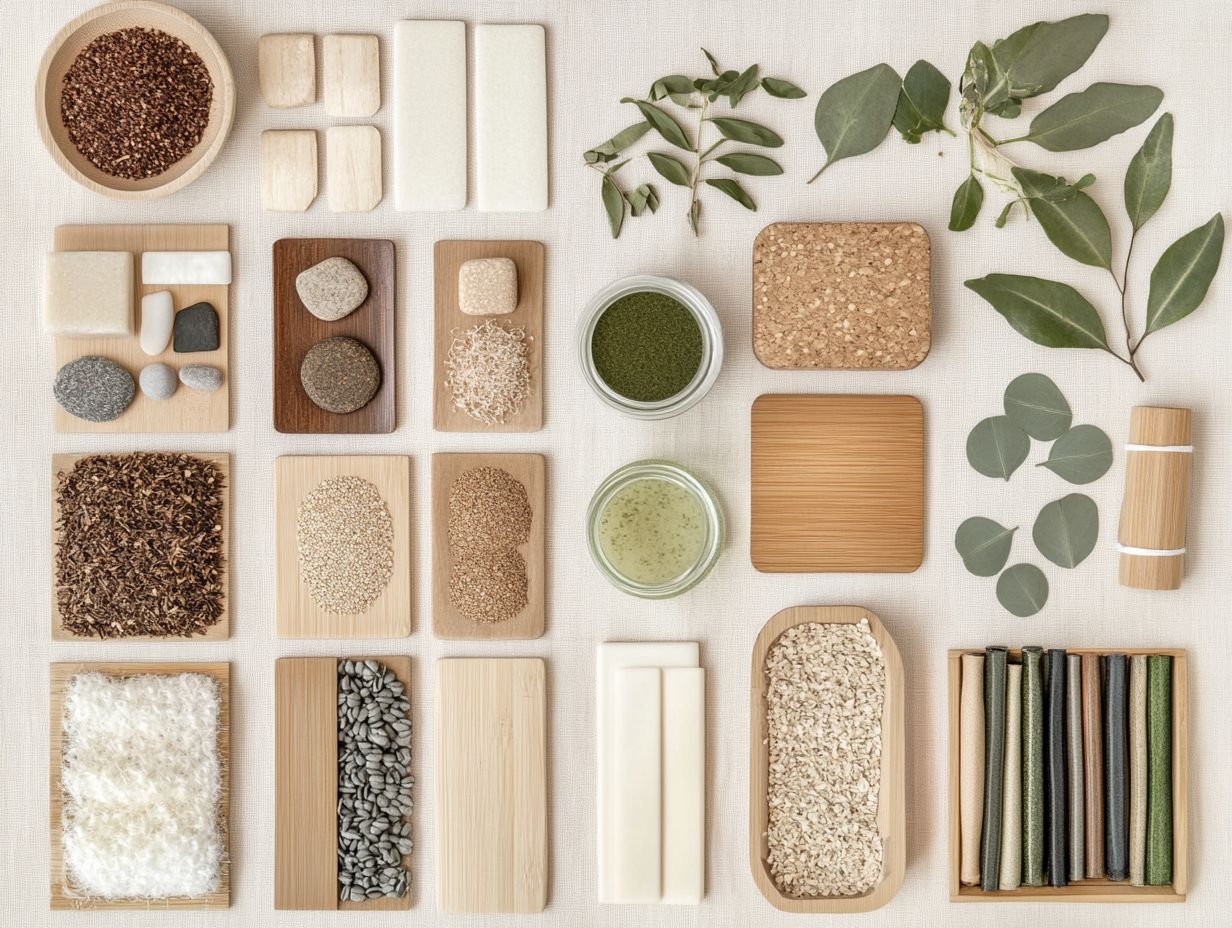
1. What are the top 5 sustainable materials worth investing in?
The top 5 sustainable materials are bamboo, cork, reclaimed wood, recycled plastic, and organic cotton.
2. Why is bamboo considered sustainable?
Bamboo grows quickly and renews itself without needing fertilizers or pesticides. Its strength makes it a great alternative to traditional wood.
3. How is cork sustainable?
Cork comes from the bark of cork oak trees, which can regenerate after being stripped. This process is safe for the trees and their ecosystems.
4. Why is reclaimed wood sustainable?
Reclaimed wood is salvaged from old buildings and furniture. This practice cuts down the need for new timber and keeps waste out of landfills.
5. Why is recycled plastic a great choice?
Recycled plastic helps reduce waste in landfills and oceans. Plus, it can be reused multiple times, making it far better than new plastic.
6. Is investing in organic cotton a good idea?
Yes! Organic cotton is grown without harmful chemicals, benefiting both the environment and the health of farmers. Choose organic for a better future!

